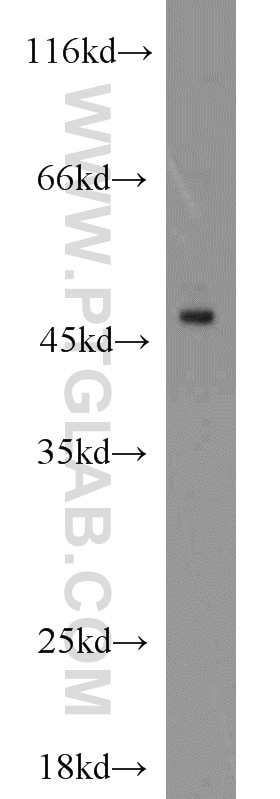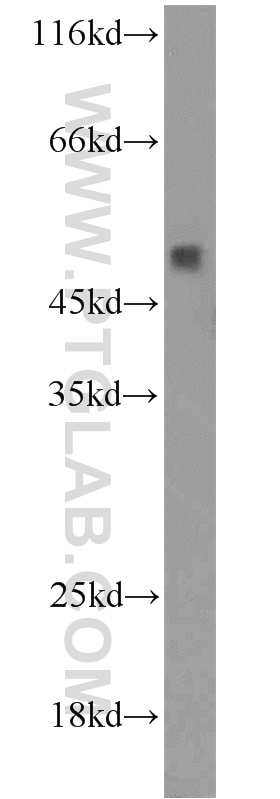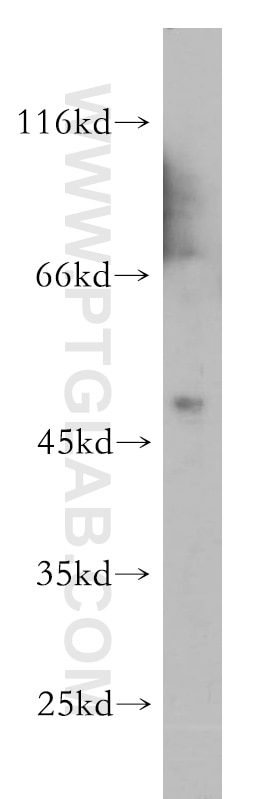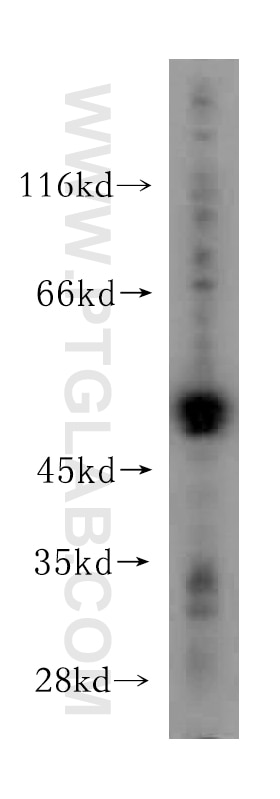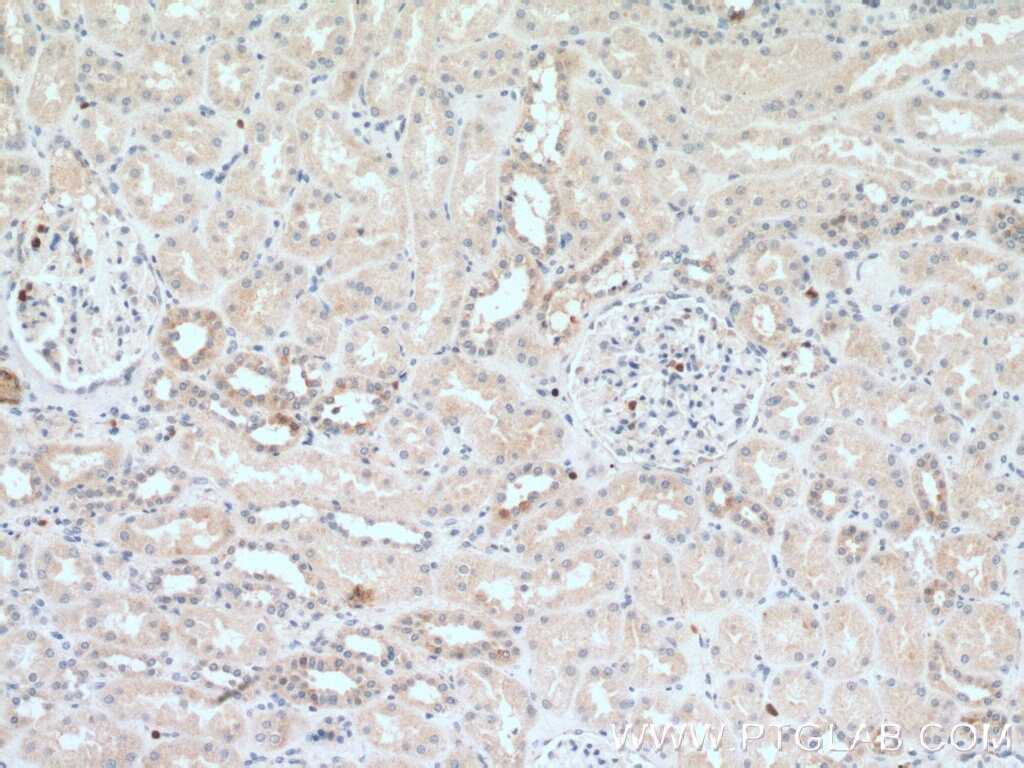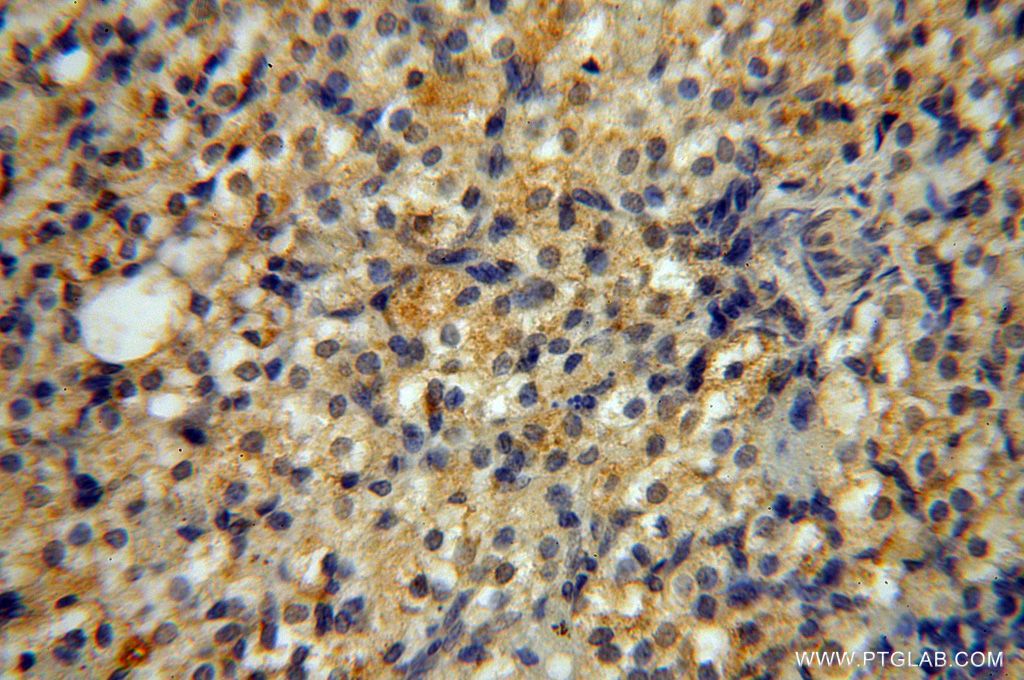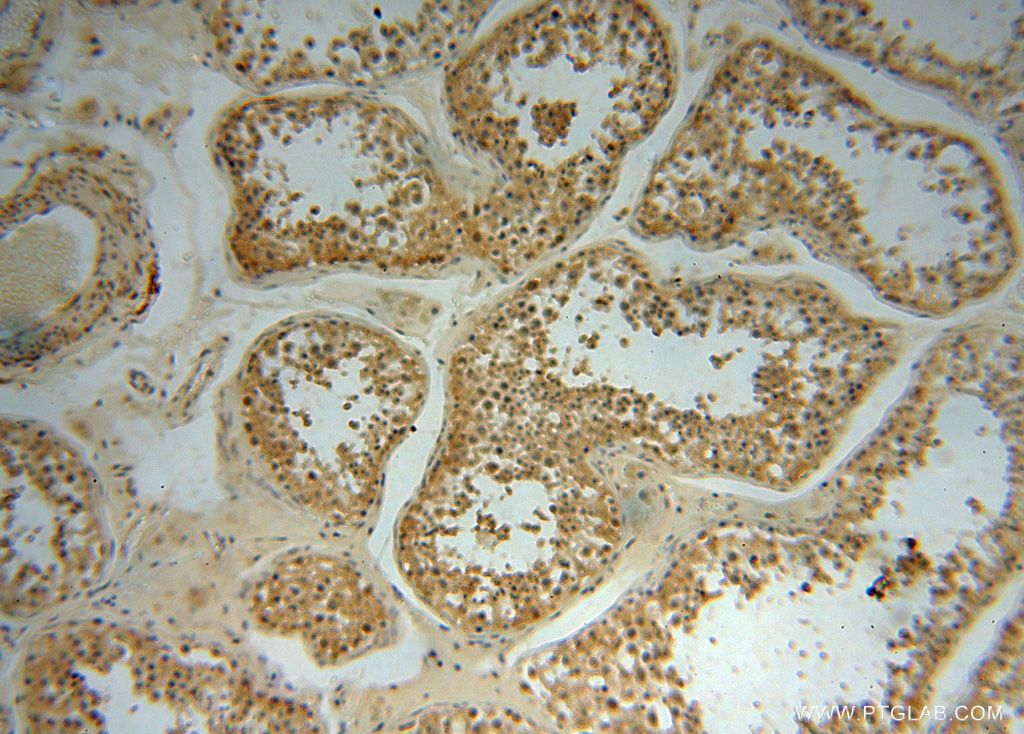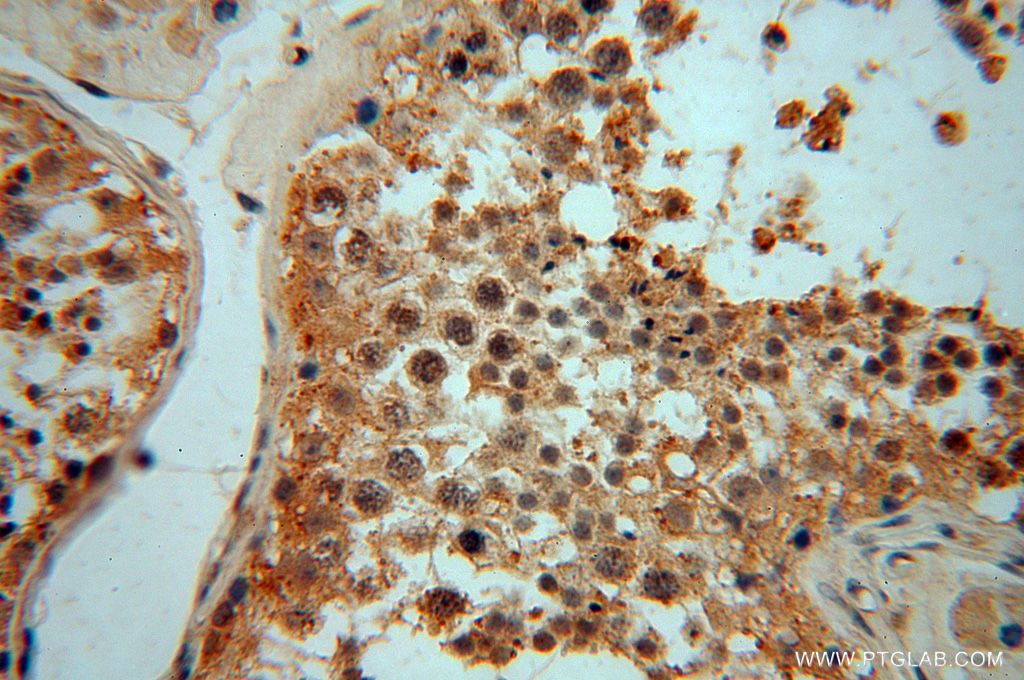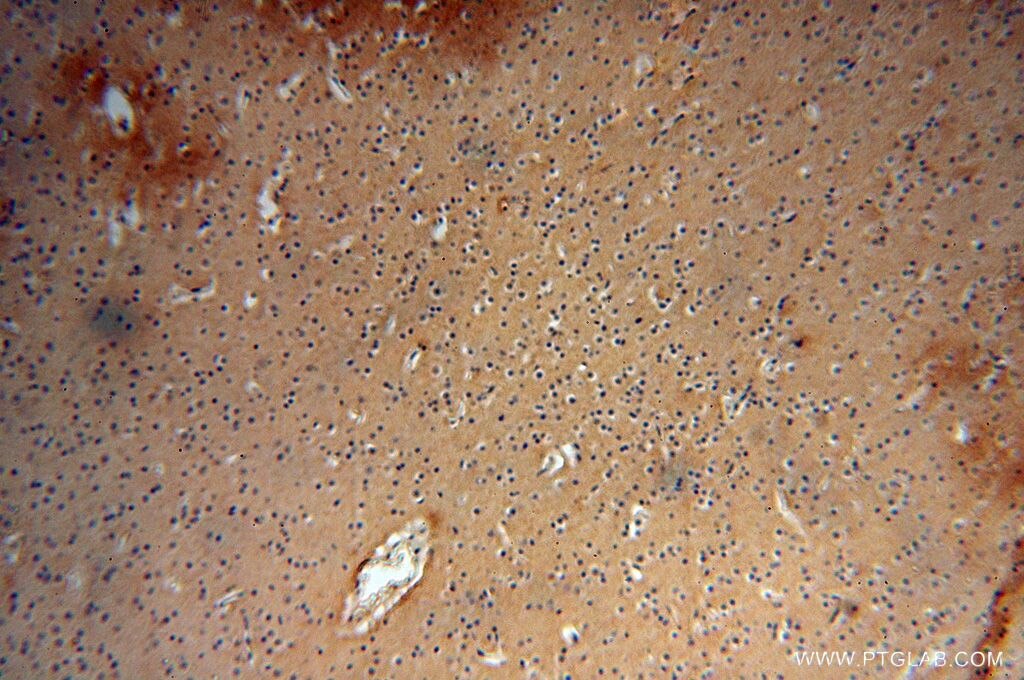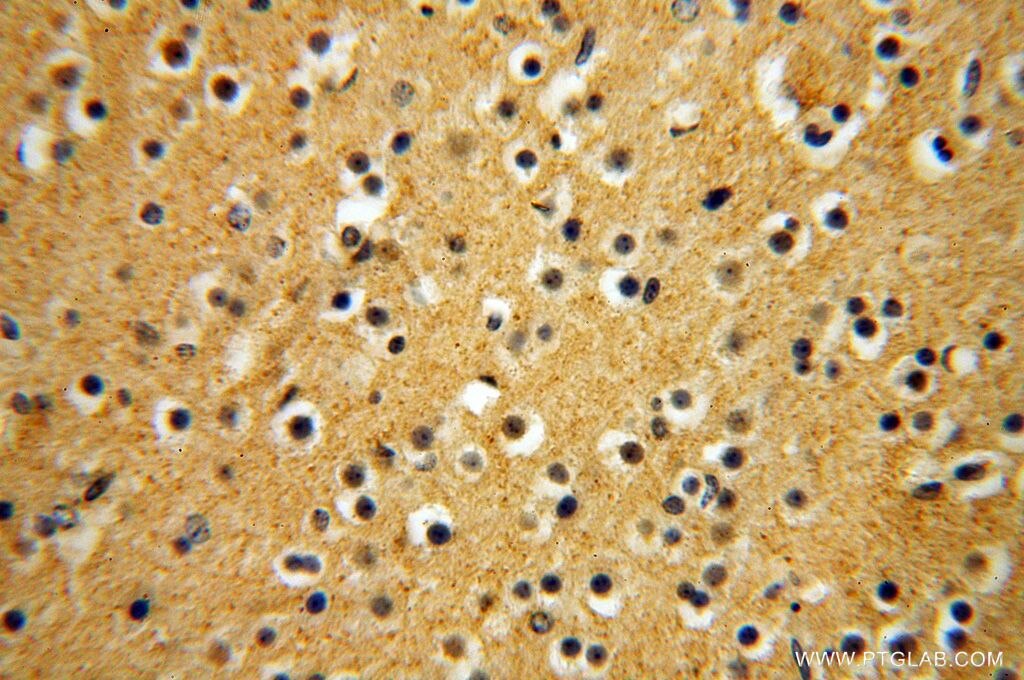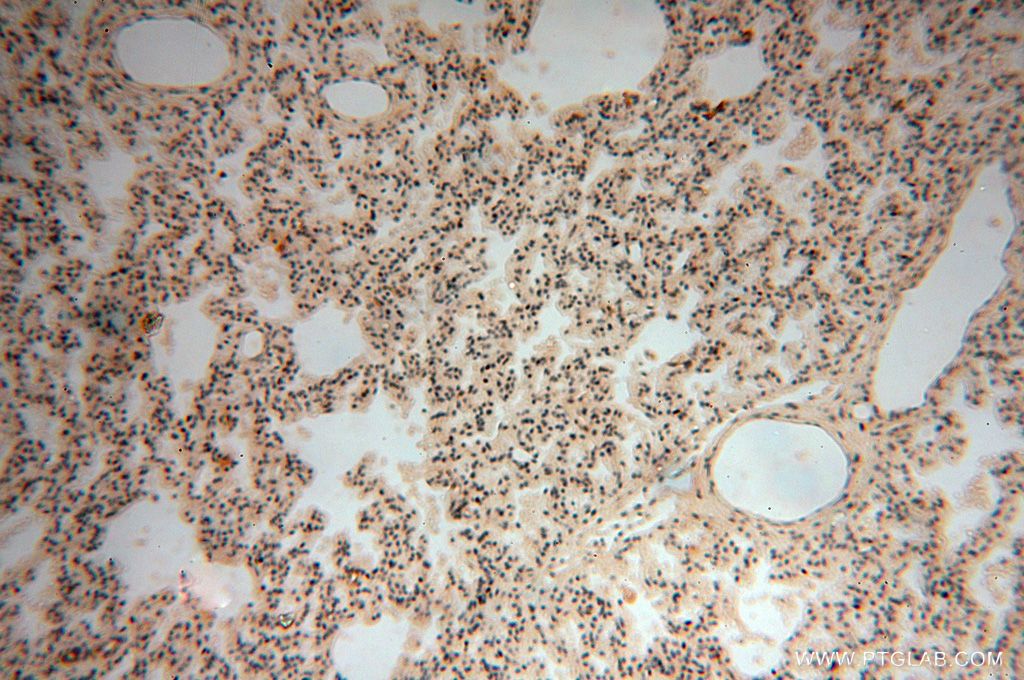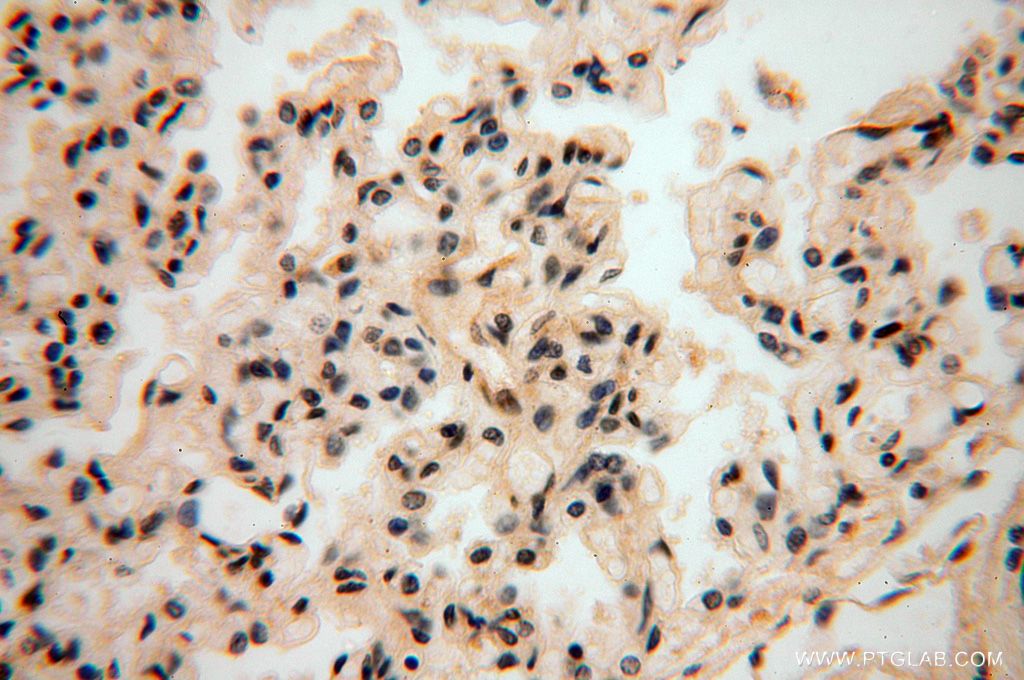- Phare
- Validé par KD/KO
Anticorps Polyclonal de lapin anti-NADK
NADK Polyclonal Antibody for WB, IHC, IF/ICC, ELISA
Hôte / Isotype
Lapin / IgG
Réactivité testée
Humain, rat, souris
Applications
WB, IHC, IF/ICC, CoIP, ELISA
Conjugaison
Non conjugué
N° de cat : 15548-1-AP
Synonymes
Galerie de données de validation
Applications testées
| Résultats positifs en WB | cellules NIH/3T3, cellules HeLa, RAW264.7 |
| Résultats positifs en IHC | tissu rénal humain, tissu cérébral humain, tissu ovarien humain, tissu pulmonaire humain, tissu testiculaire humain il est suggéré de démasquer l'antigène avec un tampon de TE buffer pH 9.0; (*) À défaut, 'le démasquage de l'antigène peut être 'effectué avec un tampon citrate pH 6,0. |
| Résultats positifs en IF/ICC | cellules HeLa |
Dilution recommandée
| Application | Dilution |
|---|---|
| Western Blot (WB) | WB : 1:500-1:2000 |
| Immunohistochimie (IHC) | IHC : 1:50-1:500 |
| Immunofluorescence (IF)/ICC | IF/ICC : 1:10-1:100 |
| It is recommended that this reagent should be titrated in each testing system to obtain optimal results. | |
| Sample-dependent, check data in validation data gallery | |
Applications publiées
| KD/KO | See 3 publications below |
| WB | See 7 publications below |
| IHC | See 5 publications below |
| IF | See 3 publications below |
| CoIP | See 1 publications below |
Informations sur le produit
15548-1-AP cible NADK dans les applications de WB, IHC, IF/ICC, CoIP, ELISA et montre une réactivité avec des échantillons Humain, rat, souris
| Réactivité | Humain, rat, souris |
| Réactivité citée | Humain, souris |
| Hôte / Isotype | Lapin / IgG |
| Clonalité | Polyclonal |
| Type | Anticorps |
| Immunogène | NADK Protéine recombinante Ag7906 |
| Nom complet | NAD kinase |
| Masse moléculaire calculée | 49 kDa |
| Poids moléculaire observé | 49 kDa |
| Numéro d’acquisition GenBank | BC001709 |
| Symbole du gène | NADK |
| Identification du gène (NCBI) | 65220 |
| Conjugaison | Non conjugué |
| Forme | Liquide |
| Méthode de purification | Purification par affinité contre l'antigène |
| Tampon de stockage | PBS with 0.02% sodium azide and 50% glycerol |
| Conditions de stockage | Stocker à -20°C. Stable pendant un an après l'expédition. L'aliquotage n'est pas nécessaire pour le stockage à -20oC Les 20ul contiennent 0,1% de BSA. |
Informations générales
NAD kinase (NADK) is the sole NADP+-biosynthetic enzyme that catalyzes phosphorylation of NAD+ to yield NADP+ using ATP as a phosphoryl donor, and thus, plays a vital role in the cell and represents a potentially powerful antimicrobial drug target (PMID:21526340). It belongs to the NAD kinase family. NADK has 3 isoforms with the molecular mass of 49, 63 and 46 kDa. The catalytically active human NADK is a homotetramer (PMID:11594753).
Protocole
| Product Specific Protocols | |
|---|---|
| WB protocol for NADK antibody 15548-1-AP | Download protocol |
| IHC protocol for NADK antibody 15548-1-AP | Download protocol |
| IF protocol for NADK antibody 15548-1-AP | Download protocol |
| Standard Protocols | |
|---|---|
| Click here to view our Standard Protocols |
Publications
| Species | Application | Title |
|---|---|---|
Cell Metab Upregulation of Antioxidant Capacity and Nucleotide Precursor Availability Suffices for Oncogenic Transformation.
| ||
Sci Adv G6PD-mediated increase in de novo NADP+ biosynthesis promotes antioxidant defense and tumor metastasis. | ||
Nucleic Acids Res Human DNA ligase IV is able to use NAD+ as an alternative adenylation donor for DNA ends ligation. | ||
Technol Cancer Res Treat A Pyroptosis-Related Gene Signature Predicts Prognosis and Tumor Immune Microenvironment in Colorectal Cancer | ||
ACS Omega Profiling of the Peripheral Blood Mononuclear Cells Proteome by Shotgun Proteomics Identifies Alterations of Immune System Components, Proteolytic Balance, Autophagy, and Mitochondrial Metabolism in Glaucoma Subjects | ||
Clin Exp Hepatol NADK as a molecular marker to distinguish between alcohol- and non-alcohol-associated liver cirrhosis: A pilot study |


